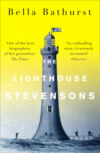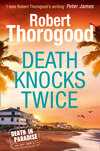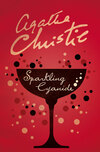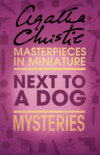Kitabı oku: «The Lighthouse Stevensons», sayfa 3
Matters improved erratically, if at all, in the nineteenth century. In 1837, an indignant committee of Edinburgh societies complained to the Treasury that even the best maps and charts of Scotland were so inaccurate that ‘in some charts, the large island of Arran is laid down as six miles from Bute, in others as nine miles, and in a third as 12 miles distant from the island. Pladda Island light in charts is placed at 16° north of Ailsa Craig, where its true distance is only 10°20’. These last are serious errors at the entrance of so important a river as the Clyde.’ Many of the roughest hazards remained unmarked, those that were noted were often wrongly placed, and the pilotage rules, with their ‘Fifty fathoms black ooze and black fishey stones among’, could often be more poetic than practical. Areas given as ‘safe anchoring’ were revealed to be notorious shipwreck spots; ports and harbours were awkward to approach and littered with the bones of old ships.
Not that adversity deterred Scotland’s swelling population from turning away from the land and onto the sea. Like the rest of Britain, Scotland needed it, fed off it, took employment from it and profited by it. From the sixteenth century onwards, the nautical traffic around Britain increased steadily, while the numbers of shipwrecks and groundings rose in tandem. Aside from farming and manufactures, the sea provided one of the principal sources of employment for a large swathe of the population until well into the nineteenth century. Directly, it provided subsistence, fish and ™ indirectly, it provided strength, funds and political muscle. By the beginning of the eighteenth century, Britain was also spending a significant amount of her time and money waging wars across it. The navy grew threefold, and with it grew the pirates, privateers and press gangs of legend. Though the end of the Napoleonic wars meant the dwindling or abolition of all three, for the moment they remained a constant threat. The escalation of trade meant the escalation in war to protect that trade. In the century between 1650 and 1750, England was engaged in six major European wars. Old routes were travelled more frequently; new ones were marked out. By the 1750s, Scotland and England had separately built up a regular trade in subsistence goods – corn, coal, livestock – with France, Scandinavia and the Baltic. The French, meanwhile, were involved in so many wars at the time that they were forced to scale down their navy and resort to privateers instead, many of whom spent their time raiding the British coast. At the same time, Scotland in particular depended on the Scandinavian countries as trading partners and maritime allies. The traffic between the two places, always constant, escalated with the growth of industry and the spread of free trade. From the Clyde ports there was the journey to the New World, which by the 1750s was providing a useful new source of tobacco, sugar, manufactured goods and slaves. To the north and south, there were the whaling grounds and beyond the Continent there were the exotic dangers of a new empire. In each direction, there were prizes to be taken and claims to be staked.
Scotland contributed her own heavy percentages to the traffic in other ways. Union with England had brought benefits, albeit slowly. Immediately after 1707, the changes were mainly internal: cattle sales to English markets, corn to English mills or men to English employment. But after the 1745 Jacobite Rebellion, Scotland’s trade with Europe accelerated and the age of the Great Improvers began. Landlords in the Highlands cleared the straths for sheep, packed off the protesting population to stony coastal settlements, taught them how to fish and left them to make a life for themselves. Some of the settlements died quietly, others took root and became export centres for wool, flax or fish. The subjugated regiments joined English wars and British battles or went south to the new shipbuilding yards in Glasgow or Greenock. Several thousand Highlanders left for the New World on leaky ships, some of which did not last the journey. Edinburgh functioned as both Continental trading post and garrison town, providing goods for export and men for war. When the press gangs sought fodder for their frigates, they looked first to the Scottish capital. For whatever cause, the population of Scotland was on the move in a way that it had not been before, and much of that movement was by sea.
And as the sea cluttered up with shipping, so it accumulated shipwrecks. In the 1790s, an average of 550 ships were wrecked every year on British shores; by the 1830s, the numbers had risen to well over two a day. The vast increase in nautical traffic around Europe had not yet been matched by any improvement in safety. There was no regulated distress code and only the most clumsy and primitive of aids: heavy leather lifejackets or inadequate row-boats. By 1800, Lloyds of London estimated that one ship was lost or wrecked every day around Britain; between 1854 and 1879, almost 50,000 wrecks were registered. The figure is probably ludicrously low. Many wrecks never reached the attention of the local Admiralty officer, either through difficulties in communication or, more likely, through deliberate concealment. Both the navy and the merchant shipowners learned through bitter experience to expect a certain percentage of their ships to sink every year they sailed. With the mortality rate so high and conditions so bad, the sailors themselves could only cultivate a brutal fatalism about their work. They lived in a twilit world, with their own jargon and codes; most did not expect to live beyond the age of forty. They regarded the government with suspicion, the law with indifference, and their landlubber compatriots with derision. They were accustomed to shipwreck or injury, they accepted that the sea was unsafe, and they remained suspicious of men who promised salvation.
Given such an ominous background, it was evident that changes would have to be made. By the 1780s, the swell of public agitation had become too strong for the government to ignore any longer. But it is notable that the pressure for lighthouses did not emerge from the sailors most at risk or indeed the organisations best equipped to provide lights. The pressure came from the shipowners and the naval captains, both of whom were keen to minimise the risks in sending precious cargo to sea. Their crews, the men who did the dying, seemed either so pessimistic about their chances for survival or so sceptical of innovation that it took several decades to convince them of the need for lights. It was the captains, the money men and the merchants who agitated most fiercely for action. Finance, as usual, took precedence over compassion. But out of such necessity came something more exceptional than the usual desultory efforts to mark the places between the sea and the land. Though the drive to build the Scottish lights was commonplace enough, the men who came to fill that role were made of rarer stuff.
TWO Northern Lights
For a short while, it seemed as if Robert Louis Stevenson might fulfil his parents’ ambitions. For nearly twenty years, he had been a worry to them. Now, when it came to settling down, he alarmed them even more. First there had been the sickliness, then the lack of schooling, then the whispers of midnight societies and shady liaisons. Worst of all was Louis’s terrible wandering mind. He seemed not to stick at anything, and spent most of his time aimlessly pacing the streets of Edinburgh or dabbling in books. His mother pleaded, and his father, Tom, grew neurotic with worry. Louis, guilty and cross, avoided home. Finally, in the spring of 1868, Tom persuaded his son that it was time he applied himself properly to the family business. Louis was to be enrolled at the University of Edinburgh to study civil engineering, and would spend his summer vacations serving his apprenticeship at his father’s projects around the country. First he was to go to the harbourworks at Anstruther and Wick, then on the lighthouse steamer’s journey round Orkney and Shetland and finally he would supervise the Dhu Heartach lighthouse works on the Isle of Earraid. Whether he liked it or not, he would follow in his father’s footsteps, just as Tom had followed in Robert’s. Louis capitulated and for a while his parents stopped fretting.
It did not last long. For three long summers around the northern shores of Scotland, Louis tried to bend his mind to the disciplines of engineering. Tom received erratic reports of progress, the news of an underwater trip in a diving bell, and occasional muffled cursings at the intransigence of the weather or the incompetence of the workmen. Louis experimented with waves, fussed over the slowness of his drawing and tried without conviction to improve his mathematics. ‘My daily life,’ he told his cousin Bob gloomily, ‘is one repression from beginning to end.’ While Tom continued to receive news of the slow progress of building at Dhu Heartach, Louis spent the rest of his leisure time wistfully discussing metrical narratives and small beer in letters to friends. In the spring of 1871, back in Edinburgh, Louis presented a paper, ‘On a New Form of Intermittent Light for Lighthouses’, at the Royal Scottish Society of Arts. The essay showed the accumulated knowledge of three obedient years following the Stevenson grail: it was workmanlike, efficient, and showed no spark of initiative whatsoever.
Tom was among the audience and watched Louis being awarded the Society’s silver medal. For him, it was a proud and vindicating moment; Louis, it seemed, had finally submitted to good sense. A week later, the two walked out to Cramond. ‘On being tightly cross-questioned,’ wrote Louis later, ‘I owned that I cared for nothing but literature. My father said that was no profession.’ Angry and desperate, Tom suggested something else instead, ‘and so, at the age of 21, I began to study law.’ It was small consolation for both of them since Louis was no more interested in advocacy than he was in engineering. Tom was left to blame his son’s fall from grace on a surfeit of imagination and too many books. Later, the two fell out even more dramatically over Louis’s agnosticism, but even then never completely separated. For years, Tom continued to send his son corrective notes on his fiction; a little more Scripture here, a little sermonising there. Sensibly, Louis ignored him. But it was a measure of Tom’s affection that he abandoned his engineering ambitions for Louis with so little resistance. As Maggie Stevenson, Louis’s mother, later noted, ‘it was a cutting-short of his own life, as he had looked forward to its being continued in his son’s career.’
Louis, it seemed, had been quick to recognise both the benefits and drawbacks of his family’s profession. As he wrote in The Education of an Engineer,
It takes a man into the open air; it keeps him hanging about harbour sides, which is the richest sort of idling; it carries him to wild islands, it gives him a taste of the genial dangers of the sea; it supplies him with dexterities to exercise; it makes demands upon his ingenuity; it will go far to cure him of any taste (if ever he had one) for the miserable life of cities. And when it has done so it carries him back and shuts him in an office! From the roaring skerry and the wet thwart of the tossing boat, he passes to the stool and desk; and with a memory full of ships, and seas, and perilous headlands, and the shining pharos, he must apply his long-sighted eyes to the petty niceties of drawing, or measure his inaccurate mind with several pages of consecutive figures. He is a wise youth, to be sure, who can balance one part of genuine life against two parts of drudgery between four walls and for the sake of the one, manfully accept the other.
Later, still smitten with guilt over his exile from Scotland and his family, he wrote a revealing poem.
Say not of me that weakly I declined The labours of my sires, and fled the sea, The towers we built and the lamps we lit, To play at home with paper like a child. But rather say: In the afternoon of time A strenuous family dusted from its hands The sand of granite, and beholding far Along the sounding coast its pyramids And tall memorials catch the dying sun, Smiled well content, and to this childish task Around the fire addressed its evening hours.
In practice, the idea of Louis as an engineer was absurd; he was far too physically frail to have lived the working life of his father and grandfather. But he remained haunted by the notion that his writer’s life was somehow less noble or worthy than the rest of his family’s more practical achievements.
One of Louis’s many attempts to redress the balance was in an unfinished Stevenson biography, Records of a Family of Engineers. The early Stevensons, he discovered, had supplied nothing but generation upon generation of tenant farmers, with the exception of John, a seventeenth-century ancestor and ‘eminently pious man’ who seemed determined on Protestant martyrdom. John spent ‘four months in the coldest season of the year in a haystack in my father’s garden’ and sleeping in Carrick fields under a blanket of snow. Though he did contract scrofula, he was spared persecution, to his apparent disappointment, in the religious purges of the 1680s. With the exception of John, however, Louis’s genealogy was one of stolid mediocrity. ‘On the whole,’ he wrote, ‘the Stevensons may be described as decent reputable folk, following honest trades – millers, maltsters and doctors, playing the character parts in the Waverley Novels with propriety, if without distinction, and to an orphan looking about him in the world for a potential ancestry, offering a plain and quite unadorned refuge, equally free from shame and glory.’ In the absence of glamorous fact, Louis felt himself forced to resort to speculation. He considered the possibility of a Scandinavian connection, evidence of a French alliance and, more imaginatively, the link with a Jacobite past. By the time Louis had completed his history, the family had acquired a smattering of Highland credibility and a link with that most glamorous of cattle-rustlers, Rob Roy MacGregor. Later biographers noted crushingly that none of this wishful thinking was true. The Stevensons were descended from quiet Lowland Whigs, none of whom ever had a dangerous political thought in their lives.
Louis’s real interest in the Stevensons began with the birth of his paternal grandfather, Robert Stevenson. Robert’s father, Alan, was a Glasgow maltster who married the daughter of a builder, Jean Lillie, in 1771. On 8 June 1772, their only son was born. Alan was still a young man, barely twenty, and with his brother Hugh had become involved in the Glasgow trade with the West Indies. When Robert was two, his father and uncle sailed south to look after their business interests, leaving Jean and Robert behind in Glasgow. Once in the Caribbean, the Stevensons found themselves the victims of a swindle. One dark night, two local merchants – possibly business competitors – arrived at their house on St Kitts, and robbed them of the contents. As soon as they heard of the burglary, Hugh set sail in pursuit of the robbers, while Alan remained behind to deal with the business. ‘What with anxiety of mind,’ Robert later recorded, ‘being such very young men – and exposure to night dews of that climate, the two brothers were seized with fever and died in 1774, my uncle at Tobago on 16 April and my father at St Christopher on 26 May.’
‘Night dews’ was then the catch-all diagnosis for any tropical disease that British science had not yet explained or cured. Malaria, cholera and tuberculosis were rife, as was sleeping sickness and influenza. Whatever the cause, the consequences of Alan’s death were, for Jean Lillie, terrible. While still young, she was left a widow with a small child, short of money and dependent on her mother for subsistence. But despite her sudden poverty, she showed a fierce loyalty to her only child. If she could not improve her own circumstances, she reasoned, at least she could improve Robert’s. Her father had sent her to an Edinburgh boarding school and Jean clearly felt the benefits of an Edinburgh education, so taking her six-year-old son, she moved the forty miles eastwards to the capital. When the time came, she tried to enrol Robert at the High School (where Walter Scott and Henry Cockburn were being educated), but found she could not afford the fees. So she enrolled him at an endowed school and kept aside a little money to pay for extra tuition in the classics. Robert’s upbringing therefore became a stern apprenticeship in scrimping interspersed with plenty of Latin and God. In the mercantile freedom of the 1780s, Robert was taught the essential details: to put his faith in hard work, meritocracy and the middle-class world. For a while, his mother hoped that Robert would make a minister of the Church of Scotland. Fortunately, his lack of Greek and hopelessness at Latin put paid to the idea.
Once established in Edinburgh, Jean Lillie began attending church in the New Town. Among the congregation was another family, the Smiths. In early middle age, Thomas Smith was a stout man, tall, plain and pragmatic. He had come originally from Broughty Ferry – then a briny little suburb of Dundee – and, like Jean, had been forced to learn self-reliance early. When Thomas was still young, his father was drowned in Dundee harbour. His mother, left with a small child, brought him up herself as best she could, gave him a good and pious education and insisted that whatever trade he took, it should at least be safely on land. Thomas took his mother’s instructions to heart and found an apprenticeship with a Dundee metal worker where he spent the next five years learning ironmongery before moving down to Edinburgh. After a few years on the staff of a metalworking company, he established his own business in Bristo Street as an ironsmith, providing grates, lamps and intricate trinkets for the New Town. The business throve and Thomas prospered. He was the creature of a most particular time, a high Tory and a businessman of talent and ambition. Louis considered him ‘ardent, passionate, practical, designed for affairs and prospering in them far beyond the average’. His first wife was a farmer’s daughter who bore him five children. Despite Edinburgh’s reputation for medicine, surviving the rigours of childhood in the eighteenth century was still a matter of good fortune. Thomas’s first children were not lucky. Three of the five babies died; only Jane and James survived. His wife too finally succumbed to whooping cough, and Thomas was left a widower with two small children. He was married again, in 1787, to the daughter of a Stirling builder who bore him one daughter, Mary Anne, and then promptly expired of consumption. Thomas, now well accustomed to mortality, started looking for another wife.
Jean Lillie, with her small, well-disciplined son and her belief in similar ideals, was a willing match. In June 1787, the two were married. It was a pragmatic partnership, based as much on the benefits of uniting two incomplete families as on affection or companionship. It was also a marriage of equals. Jean was a strong-minded soul, who earned the devoted respect of her new husband in return for security and a stable upbringing for his children. The arrangement also served Robert well. By now, it was evident that he had infinitely more talent, and greater patience, for the practicalities of mechanics than he had for Latin. When Thomas took him on a guided tour of his ironworks, Robert was beguiled by the blend of craftsmanship and usefulness. By 1790, Thomas had taken Robert on as an apprentice, and the boy’s efforts at Greek, French and theology were forgotten.
Thomas’s main business at the time was in lamp-making and in designing street lighting for the New Town. The lamps at the time used oil, which silted up quickly with grime and gave out only a weak and smoggy light. Thomas, experimenting with methods of improving the standard design, began devising a system of reflectors placed behind the light to strengthen and focus the beam. The idea, he knew, had been used successfully elsewhere in Europe but had not yet been introduced to Scotland. At first, he made the reflectors out of concave circles of copper, the size and shape of scooped-out melons and polished to a high sheen. Later, he varied the design, welding small slivers of mirror to the back of a concave lead circle. Seen now, his reflectors look like an inside-out antique mirrored ball, but in 1780s Edinburgh, they were revolutionary. All light sources were measured in units of candela (or candlepower), one medium-sized tallow candle producing roughly two units of power. Thomas’s designs quadrupled the strength of the light and produced something closer to a concentrated beam than a lamp on its own could ever achieve.
Thomas fitted several of his parabolic reflector lights around the New Town and then, mindful of the need for more business, contacted the Trustees for Manufactures in Scotland. His reflectors, it seemed, had practical applications beyond mere street lighting; would they, enquired Thomas, be useful for lighthouses? As Thomas explained it to them,
Lamps being Inclosed are preserved from the Violence of the wind and weather but Coal lights cannot bereflector of proper power transcends it ixceedingly and is seen at a inclosed…Lamp light of itself has a more pure and bright flame than Coal light and when Conjoined with a reflector of proper power transcends it exceedingly and is seen at a much greater distance…Lamps take less attendance…Lamp lights with reflectors can be distinguished from every Other light in Such a manner as to make it Impossible to mistake them for a light on shore or on board any Other Ship…Coal lights are not capable of this Improvement.
He had, he declared, already prepared a sample reflector and was happy to demonstrate it to ‘any gentleman concerned’. The Trustees inspected his work, and agreed that Thomas’s designs would indeed be useful. Beguiled by his enthusiasm, they sent him south to gain experience from an English lighthouse builder. Once returned, he was made first engineer to the Northern Lighthouse Trust.
The title might have been imposing; the organisation itself was not. The Trust (now the Northern Lighthouse Board, or NLB) had been established after complaints about the state of the Scottish coast had reached boiling point. Several evil-tempered storms during the winter of 1782 had crippled both the naval and the merchant fleets, both of whom urgently petitioned Parliament to remedy the existing situation. Parliament set up a committee which recommended the construction of at least four lighthouses, scattered at vital points around the Scottish coast. In 1786, the bill was passed and the NLB was born. The Act for Erecting Certain Lighthouses in the Northern Parts of Great Britain provided for a management committee and a few officials to collect revenue, stipulated the sites of each light and then left the Board to its own devices. With its leaden cargo of sheriffs, judges and public goodbodies, the committee had only the most feeble knowledge of the sea and none at all about lighthouse construction. The Lighthouse Commissioners, as they were known, had been selected with the intention of providing political and financial canniness to the Board; as public officials, they were accustomed to question the cost of everything and trust the value of nothing. Their appointment was also partly political. Since the lighthouses would be built within the sheriffs’ fiefdoms, it was easier to give each one a place on the Board than to woo them anew every time a light was to be built on their land.
From the beginning, therefore, there was a strict division of roles. The Commissioners figured and the Engineer built. The Commissioners respected the experience and integrity of the Engineer; the Engineer lived within the Commissioner’s restrictions. ‘I beg leave to acquaint you that I am willing to do every thing in my power to bring to perfection the plan proposed,’ wrote Thomas in September, ‘and to superintend the erection of the lights, teach the people how to manage them and to do every thing necessary to put and keep them in a proper state…It is impossible at present to form any judgement of the trouble attending this business as I hope it will turn out a benefit to the Country.’ His first job, they announced, would be to construct four new lights: one at Kinnaird Head just beyond Fraserburgh, one at Mull of Kintyre overlooking the Firth of Clyde, one at Eilean Glas off the edge of Harris, and one on North Ronaldsay, a small island above the Orkney mainland. He could build them, staff them and light them in any way that he wished, they promised, as long as it wasn’t too expensive. The Commissioners, meanwhile, stayed in Edinburgh, counting the costs and squabbling politely with London.
Thomas could have been forgiven for wondering what exactly he had got himself into. For a start, he had no architectural experience, let alone the kind of experience necessary to build a sea-tower exposed to the hardest conditions wind and wave could hurl at it. Lighthouse construction was, to say the least, a specialist subject in the 1780s, although the idea of a lighted tower for mariners’ guidance had existed in some form or another since the Pharos of Alexandria was built by the Egyptians in 300 BC. The Pharos was an immense and ornate tower 450 feet high, topped with an open fire, and considered so splendid that it was usually listed as one of the Seven Wonders of the World. Later attempts were less glamorous. Since there was no state control of lighthouses in Britain until well into the eighteenth century, their design was left to the individuals who built them. Far from being the trim marine spires of popular image, the English lights developed endless exotic variants. Most were coastal towers with large braziers of coal fixed to their roof. Some were church steeples loosely adapted for the purpose. Disused castles and priories were occasionally put to use, and in Ireland, there were several lights built in stone-vaulted cottages. Even those built specifically as lighthouses did not follow any definite pattern. Some looked like stumpy medieval rockets, some like upright coffins, others not much different from the average cow byre. One or two followed the design of fortified keeps, sturdy enough for the hardest gale. Others were no more than an iron basket filled with coal and suspended on a pulley. A number of owners built their lights in wood. Unsurprisingly, not many examples of these survive.
Until the 1780s, the only permanent light in Scotland was on the Isle of May which had been alternately saving and exasperating mariners for a century or more. The lighthouse had been built in 1636 on a small, low-lying islet at the entrance to the Firth of Forth. The mouth of the river was filled with snags for unwary shipping; rocks, sandbanks and awkward reefs on the surface and a graveyard of dead ships underneath. The islet was the first and the largest of these rocks and had gained a vicious reputation for shipwreck and destruction. In 1635, the Scottish Privy Council had given the task of constructing a light to three of Charles I’s favoured Scottish courtiers, who designed it, built it and maintained it at their own expense and then charged local shipping for its use.
Even by the make-do standards of the age, conditions for the lone keeper were unusually grim. The isle, a mile long by a third of a mile wide, was barren except for a little pasturage and a low, squat tower like a medieval keep with a brazier on the roof. The owners hired a local man, George Anderson, to tend and supervise the fire, and arranged for a boatman to appear every few days to drop a new delivery of coal into the shallow waters by the island’s rocky shore. Anderson would pick the coal out of the waters, haul it along to the tower on his back and winch it up in a bucket to the roof. For this, he was given a salary of £7 a year, 30 bushels of meal for his family and all the fishing rights he could want. Since he therefore spent most of his time away from the island looking for fish, the fire stayed untended and usually went out at the crucial moment. It was several years before someone took pity on the poor man and offered him the assistance of a second keeper and a horse.
Even when the fire was maintained, one light was hardly satisfactory for all Scotland. As the Isle of May proved, coal lights were inefficient, gobbled fuel and expired just when they were most needed, in gales or heavy rain. They required constant supervision, were usually clogged by smoke and could easily be mistaken for fires inland. Thomas was evidently going to have to start from scratch, devising new buildings, new fuels and new solutions if he was to succeed in improving the current situation. But if lighthouses came without templates, so too did their architects. There was, as yet, no such thing as an archetypal engineer, let alone a civil or marine specialist. The qualifications and bureaucracy of the modern profession did not exist 200 years ago. When Samuel Johnson published his famous Dictionary in 1755, he described an engineer as ‘an officer in the army or fortified place, whose business is to inspect attacks, defences, works’. As Louis later pointed out, ‘the engineer of today is confronted with a library of acquired results; tables, and formulae to the value of folios-full have been calculated and recorded; and the student finds everywhere in front of him the footprints of the pioneers. In the eighteenth century the field was unexplored; the engineer must read with his own eyes the face of nature; he arose a volunteer, from the workshop or the mill, to undertake works which were at once inventions and adventures. ’ If he was to design, build, supervise, and maintain each of the NLB’s new lights, Thomas therefore needed to become an inventor in his own right. Much of his work was without precedent, and where tested methods did not already exist, Thomas had to improvise as best he could.










